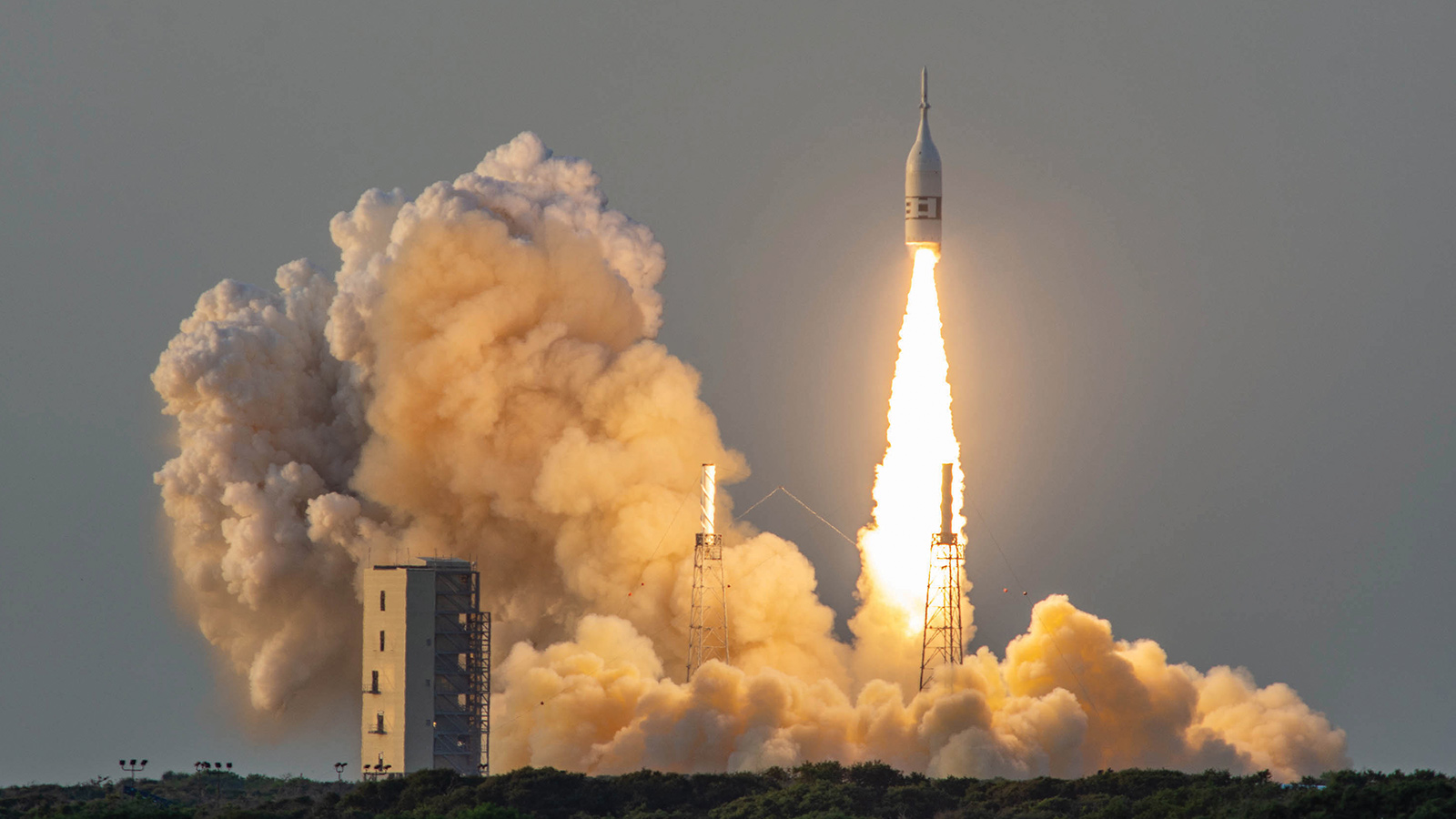Stay Up to Date
Submit your email address to receive the latest industry and Aerospace America news.
The Solid Rockets Technical Committee studies techniques applied to the design, testing and modeling of rocket motors based on solid propellant grains.
Aerojet Rocketdyne expanded this year with two new solid rocket motor facilities. In April, the company began construction on a 17,000-square-foot (5,100 square meter) engineering, manufacturing and development complex for large solid rocket motors in Camden, Arkansas. The company opened a 136,000-square-foot (41,000 square meter) advanced manufacturing facility in June in Huntsville, Alabama.
Beyond new buildings, Aerojet Rocketdyne also achieved a hardware milestone in June when it delivered the jettison motor for Lockheed Martin’s Orion spacecraft. The jettison motor is responsible for separating Orion’s launch abort system from the crew module after a launch or after the crew module has been detached from the main vehicle and reoriented in the case of a launch failure.
Northrop Grumman also played its part in the ongoing development of the Orion capsule. In July, when Orion underwent a test of both the capsule and launch abort system, Northrop Grumman provided a modified Peacekeeper booster to lift the capsule and launch abort system, which exposed both systems to atmospheric flight conditions. In addition to the booster, Northrop Grumman provided the abort and attitude control motors.
Apart from its role in the development and testing of the Orion launch abort system, Northrop Grumman conducted several tests of other solid rockets. In April, the company conducted the second ground test of the newly developed 63-inch-diameter (160 centimeter) Graphite Epoxy Motor. Known as GEM 63, it is a strap-on solid booster motor that will provide extra power to United Launch Alliance’s Atlas V. Additionally, in May, Northrop Grumman tested the first stage of its new OmegA rocket in Promontory, Utah. The motor fired for 122 seconds, producing more than 2 million pounds (8.9 million newtons) of thrust.
The European Space Agency, French National Center for Space Studies and Europropulsion collaborated on a test for the first qualification model of the P120C solid rocket motor in January. This stands as the second test of the P120C; the first was in July 2018. ArianeGroup and Avio co-developed the P120C in support of the Ariane 6 and Vega-C rockets. It is housed in a monolithic carbon fiber case, making it the largest such rocket in the world.
China’s Smart Dragon-1 rocket was launched for the first time in August. China Rocket Co. developed Smart Dragon-1, which is designed to deploy small commercial satellites (about 200 kilograms) into orbit using four solid-propellant stages. Also faring from China, iSpace in July became the first private Chinese company to launch a payload into orbit. The payload consisted of several small satellites and was propelled into space on board the Hyperbola-1, which was comprised of four stages, the first three using solid propellants.
Contributors: Clyde Carr, Michel Berdoyes and Scott McHenry
Related Posts
Stay Up to Date
Submit your email address to receive the latest industry and Aerospace America news.




